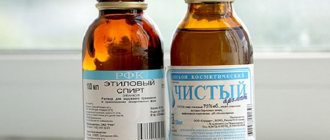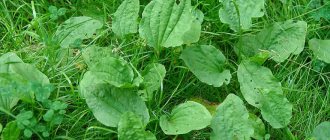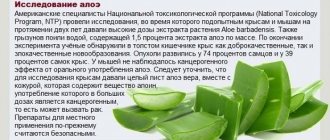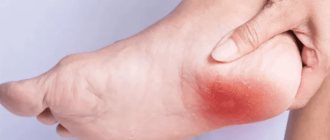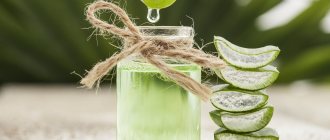An enema is an unpleasant and rather intimate procedure. However, there are few people in the world who have not had to go through it. And when the need arises for performing an enema, it is important to be able to do it correctly. Otherwise, it will turn out to be useless, and sometimes even harmful.
There are mainly two types of enemas:
- Medicinal. When setting them, microenemas with a volume of up to 100 ml are used. With their help, a solution of drugs is introduced into the rectum and sigmoid colon, which must be absorbed.
- Cleansing. The liquid is introduced in a volume of 1.5-2 liters using an Esmarch mug.
There are quite a few indications for using an enema. These are diseases such as constipation, intoxication, proctitis, intestinal dysbiosis, prostatitis, diarrhea, dyspepsia and so on. Each disease has its own method of administering an enema. In addition, when prescribing this procedure, the doctor takes into account the condition of each individual patient. So, for people suffering from hypertension, edema, intracranial pressure, the doctor prescribes a so-called hypertensive enema - with a hypertonic solution of table salt or magnesium sulfate.
Cleansing enema - indications
A cleansing enema is indicated in several cases. The procedure has one goal - to cleanse the intestines of feces.
✔ The procedure is carried out for persistent constipation.
✔ An enema is given to remove toxic substances in case of poisoning.
✔ A cleansing enema is necessary before surgery.
✔ The procedure is prescribed before childbirth.
✔ Before X-ray examinations of the digestive tract.
✔ A cleansing enema is prescribed for endoscopic examinations of the colon.
Cleansing enemas are contraindicated for acute inflammatory and erosive-ulcerative lesions of the colon mucosa. You cannot give a cleansing enema for some acute surgical diseases of the abdominal organs. This is acute appendicitis, peritonitis. A cleansing enema is also contraindicated for gastrointestinal bleeding, disintegrating colon tumors, and in the first days after surgery in the abdominal organs. An enema is also contraindicated in cases of severe cardiovascular insufficiency.
How to prepare a solution of potassium permanganate
Potassium permanganate is a versatile substance that is used for various medicinal purposes.
A weak solution of potassium permanganate is indicated for poisoning, both for washing the stomach and intestines. To prepare the medicinal composition, you need to dissolve 5-6 grains of potassium permanganate in a small volume of water, and then pour the resulting concentrate into the total volume of liquid for the procedure. First, the solution is filtered through several layers of gauze so that undissolved crystals do not fall on the intestinal mucosa, otherwise there may be a burn.
Scheme for colon cleansing with enemas
There is a developed scheme for performing cleansing enemas before starting any treatment or in parallel with it. Cleansing with enemas according to the scheme cleanses the body of toxins. Before starting treatment for any chronic skin disease, a cleansing enema is necessary.
Colon cleansing with enemas is carried out according to the following scheme
| A week | Frequency of enemas |
| 1 | Weekly |
| 2 | In one day |
| 3 | After two days |
| 4 and all subsequent ones | Once a week |
Let's sum it up
An enema is an effective, uncomplicated and inexpensive method of cleansing the intestines at home, which any adult can independently perform. The main thing is not to forget about the key points: the volume and temperature of the water, preventing air from entering the intestines. You shouldn’t overuse enemas either - there are many stories about people who liked the quick effect of enema therapy and the feeling of lightness after the manipulation, and a side effect of such an addiction to cleansing was the inability to go to the toilet on their own.
Again, if a person abuses poor nutrition, using an enema for cleansing is quite stupid. You need to start by following a diet so that as little food waste as possible enters the body, then the need for an Esmarch mug will be extremely rare.
Esmarch's irrigator
Esmarch's irrigator.
Photo: Social networks A cleansing enema is given using a special rubber or glass Esmarch mug. Esmarch's mug is a special tank with a hole with a volume of one to two liters.
A special rubber tube about one and a half meters long is attached to the mug. At the end of the tube there is a special rubber or plastic tip. There is also a special tap at the end of the tube, with which you can regulate the flow of water from the mug into the rectum.
Cautions
A homemade enema is not the best option for colon cleansing. During use, mechanical damage to the tissues of the anus and rectum, thermal burns, and excessive stretching of the intestinal walls, even to the point of rupture, cannot be ruled out. Some of the complications pose a direct threat to human life, therefore, unless absolutely necessary, it is not recommended to use an enema from improvised means.
In order to avoid the need for an enema to facilitate bowel movements and cleanse the intestines during constipation, it is recommended to carry out preventive measures. They allow you to normalize stool and include a rational diet and physical activity.
Bibliography
- Privorotsky V.F., Luppova N.E. Modern approaches to the treatment of functional constipation in children. RZhGGK, 2009
- Plotnikova E.Yu. Modern ideas about constipation. Attending physician, 2015
- T.P. Obukhovets, T.A. Sklyarova, O.V. Chernova. “Fundamentals of Nursing”, Rostov-on-Don: “Phoenix”, 2003.
How much water is required for an enema?
For a cleansing enema, an adult needs from one to one and a half liters of warm water. Recommended water temperature is from 25-35°C.
To stimulate contractions of the colon during atonic constipation, you can use water at a lower temperature - from 12 to 20 °C.
If it is necessary to relax the smooth muscles of the intestines during spastic constipation, you need to use water at a temperature of 37 to 42°C.
To enhance the cleansing effect of the procedure, you can add 2-3 tablespoons of glycerin or any vegetable oil to the enema water. You can dissolve one tablespoon of baby soap shavings in water.
What solutions can be used
The solution for a cleansing enema can be different; in some cases, they take ordinary pre-boiled water, cooled to room temperature. The following liquids are most often used to cleanse the intestines:
- a weak solution of kitchen salt;
- baking soda solution;
- faint pink solution of manganese;
- decoction of chamomile;
- decoction of herbs and yarrow flowers.
Prepare the solution immediately before the manipulation; the water used for the cleansing enema must be boiled.
Any enema solutions should be at room temperature. Very hot liquid will lead to strong absorption of toxins, and cold liquid can provoke an inflammatory process.
How to give an enema at home - algorithm of actions
✔ Pour the required amount of water into Esmarch’s mug, open the tap and fill the rubber tube, displacing the air from it. Lubricate the tip of the tube with Vaseline. Close the tap and hang the mug above the level of the bed on which the patient will lie.
✔ The patient should undress and lie on the bed, turning on his left side. Legs need to be bent at the knees and pulled towards the stomach. In this position, the anus is more accessible for insertion of the tip. A medical oilcloth should be placed under the patient’s buttocks; one edge of the oilcloth should be lowered into the pelvis.
✔ With the first and second fingers of the left hand, spread the patient’s buttocks, and with the right hand, using careful rotational movements, carefully insert the tip of the tube lubricated with Vaseline into the rectum to a depth of 10–12 cm.
✔ At the beginning of inserting the tip, insert the first 3-4 centimeters of the tip towards the patient’s navel. Then turn the tip according to the lumen of the rectum and continue insertion parallel to the coccyx.
✔ After inserting the tip, you need to open the tap and introduce liquid, raising the mug to a height of up to one meter.
✔ If water does not flow, you need to push the tip back a little and increase the water pressure, while raising the mug higher. If the patient complains of pain in the colon, reduce the pressure.
✔ After completing the fluid administration, the patient must be patient and refrain from bowel movements for 5-10 minutes.
Due to the stimulation of colon peristalsis, when administering an enema, the lower intestines are emptied of feces. We can say that a cleansing enema is a simple and painless cleansing of the intestines.
Preparation for the procedure
It is best to cleanse the intestines with an enema early in the morning - at 5-7 o'clock or in the evening at 20-21 o'clock. This time promotes good bowel cleansing. The following positions can be taken: squatting; lying on your right or left side, pressing your knees to your stomach; kneeling, lean on your elbows; standing, bending over and resting your palms on your knees; lying on your back.
For a cleansing procedure at home, you will need an Esmarch mug. Purchase it at the pharmacy in advance if you don’t have one yet. For those who do not know what this item is, here is its description: it is a rubber balloon (sometimes polyethylene), resembling a rubber heating pad in appearance, with a flexible thick-walled tube 1.5 meters long and removable tips (plastic, glass) 8-10 meters long cm.
The faucet helps regulate the flow of fluid into the body. The absence of a faucet can be replaced by a clothespin or other similar item. Its capacity is different - 1; 1.5; 2.5 liters. This reservoir is intended for hygienic purposes - washing or douching. In order not to damage the intestine, the tip must be used smooth - without chips, nicks or scratches. Before and after use, the tip is thoroughly washed with soap and disinfected by boiling or rinsing in alcohol.
What solutions are used?
The classic solution used is a simple water enema warmed to body temperature. Liquid is necessary to free the canals from feces and accumulated gases. This type of enema can be used by men, women, and children. The water temperature is adjusted depending on the complexity and type of constipation:
- When paralysis of the organ and complete atony are observed, the temperature of the liquid is brought to a maximum of 25 degrees. If the violations are serious, then the mark on the thermometer should be 12. Helps relieve fever and increases intestinal motility.
- If the patient has hyperthermia, then the solution is needed with cold water (15 degrees). A set of manipulations is performed: three enemas every 30 minutes, along with medications to improve the patient’s condition.
- The spastic type of constipation is eliminated by a procedure with hot liquid - 35-42 degrees. If there are symptoms of intoxication, this process is not advisable. Under the influence of a warm solution, fecal matter will begin to dissolve and be absorbed into the bloodstream, which will worsen the patient’s condition. Since the symptoms are similar for atonic and spastic constipation, it is advisable to maintain a solution temperature of 25 to 35 degrees.
To help the body cope with constipation and for preventive purposes, the following composition is used:
- Medicinal herbs
. Refers to the cleansing form of the procedure. As a rule, chamomile is taken in combination with sage, mint and eucalyptus. The decoction is prepared either by adding boiling water or by simmering over low heat for five minutes. The procedure is recommended after spontaneous bowel movement. inflammation inside, normalizes the acidity of the rectum, does not upset the balance between beneficial and pathogenic microorganisms that make up the local microflora. - Milk enema
. Take a liter of liquid and heat it up to 30-40 degrees. An Esmarch mug is used to carry out the procedure. Treatment should not exceed five days. This procedure is not performed during menstruation. You need to wait three days. Constipation is effectively eliminated and gas bubbles collapse. - Oily
. When a person does not have bowel movements for a long time, Vaseline, olive or vegetable oil are used to prepare a solution. You will need up to 100 milliliters of fat, preheated to 40 degrees. The oil solution is injected directly into the intestines using a syringe. - Lemon procedure
. The juice from two fruits dissolves in a liter of water. The liquid should not be cold, so it is heated to 35 degrees. Citric acid irritates the intestinal villi and defecation occurs. Thanks to vitamins, the walls of the organ are strengthened, pathogenic microorganisms and worms die. - Soda cleansing
. Soda is an alkali that can reduce acidity due to diseases of the upper epigastrium. It helps not only to clean the intestinal tract, but also helps to eliminate spasmodic phenomena and pain during bowel movements.
How to give an enema to a child
The algorithm of actions when performing the procedure on a child differs significantly from giving an enema to an adult. A cleansing enema is a useful procedure, but its effect depends on the amount of water introduced, the pressure of the incoming fluid, the temperature of the water and the speed of its administration.
Without consultation with the doctor, in case of acute abdominal pain, an enema is contraindicated for a child. Enema devices are disinfected by boiling after each use.
✘ For children under 3 years of age, an enema is given with a rubber balloon, that is, a medical bulb.
✘ For children in the first months of life, use canister No. 2, it is designed for 50 ml.
✘ For 3-11 month old babies, use a cylinder No. 2.5, it is designed for 100 ml.
✘ For children aged one to three years, balloon No. 4 is used. Its capacity is 170 ml.
✘ For older children, an enema is given using a special device: an irrigator. This is a rubber bag or kettle to which a tube with a rubber or plastic tip is attached for safe insertion into the rectum. The length of the tube is up to one and a half meters. The higher the irrigator is raised during the procedure, the higher the pressure of the injected fluid. The recommended height for lifting is from 0.5 to 1 meter.
Patient reviews
Patients themselves also often write on forums about their experience of using enemas - some use regular water enemas, some buy special ones with a solution (for example, Enema), while others call a specialist and choose the optimal composition of the liquid with him.
Maria, 25 years old, had her bowel lavaged before going for an endoscopy: “It’s the hardest thing to cleanse yourself properly, you’re always afraid of doing something wrong. She called the nurse and was even surprised that the enema was administered without discomfort. Fast and no problems, I recommend.”
Andrey D. shared another experience, a little less pleasant: “I had to give an enema before a visit to the proctologist, but for me it was the first experience of such a procedure - as a result, a lot of unpleasant sensations and damage to the mucous membrane. The doctor said that coming “unprepared” is not critical, it’s better not to harm the body and ask a specialist for help.”
Christina N. says: “For a couple of years now, my grandmother has been bedridden and moves little—hence the problems with stool. Recently we tried to give an enema with the help of a nurse, the result was excellent, I calmly emptied after half an hour. It’s a good method, and there’s no need to poison an elderly person with laxatives, she already has a lot of pills.”
From their impressions it is clear: constipation cannot always be prevented, because it appears from stress, from travel, and from unusual cuisine. An enema is a simple and affordable way to cleanse the intestines, so there are a lot of positive reviews.
How much water is needed to give a child an enema?
Medical pears.
Photo: Social networks Infants are given 50 to 100 ml of water. Children from one to five years old: 150 to 300 ml of water. Children aged six to fourteen years tolerate the introduction of 300–700 ml of boiled water well.
Liquid should be injected into the rectum slowly, without a sudden increase in pressure. In accordance with the doctor's recommendations, a cleansing enema may contain additives in the form of table salt and baking soda. The recommended dose is 0.5–1 teaspoon per glass of water.
An enema with only water is most often not prescribed for children. Your doctor may recommend adding vegetable oil: 1–4 tablespoons of vegetable oil per 0.5–1 cup of chamomile tea. The water temperature can fluctuate between 27-38 °C.
Water-oil or water-soap enema solutions
The oil coats the stool and relaxes the intestinal muscles. After administering the enema, you must be in a horizontal position for 15-20 minutes. After the oil enema, another one with chamomile is given. It is recommended to carry out the procedure in the evening before going to bed.
As a preparatory procedure before the enema, the fecal plug in front of the anus is removed. The doctor does this with his hands, wearing gloves, lubricated with medical Vaseline.
Oil of vegetable origin is added to the water, most often taken:
- castor;
- sunflower.
The proportion to be observed is as follows:
- one part butter;
- five parts water.
If you don’t have vegetable oil at home, and you need to do an enema urgently, find ordinary toilet soap that does not have:
- flavorings;
- other cosmetic additives.
Cut the piece into small chips and mix the resulting fluffy mass with water, stirring the ingredients until completely dissolved.
What is the difference between an anal douche and an enema?
The difference between an anal douche and an enema is the amount of water used and the degree to which the anus is cleaned. The shower is ideal for beginners. Showers typically hold up to 400ml of water, and because they push the water out manually, they are much easier to control.
The inlet is usually equipped with a bag that holds 400 ml to 2 liters of water and allows water to flow automatically into the anus. Some input bags have adjustable valves so you can control the amount coming in. Injections often have a longer nozzle, which allows the water to penetrate deeper into your body than with an anal douche; due to the larger amount of water, enemas provide a more thorough cleaning, but are not necessary.
What is anal douche?
Before engaging in anal intercourse, this causes many to worry about hygienic and aesthetic considerations, even if you have previously had a bowel movement after wanting a thorough cleansing of the colon before anal douche.
Even when using a condom, contact with feces is undesirable for many, especially during anal intercourse.
As children, we learned that anything that "comes out the back" is "fluff." Even adults can rarely talk calmly about their discharge. There is a possibility that in the zeal of sexual struggle something of the “pfui” always slips through.
For some it's not a big deal, they wash it off and that's good. However, most users emphasize the fact that the colon (rectum) undergoes a thorough cleansing of the colon before penetration (such as butt plug play or anal chain with its anal beads).
